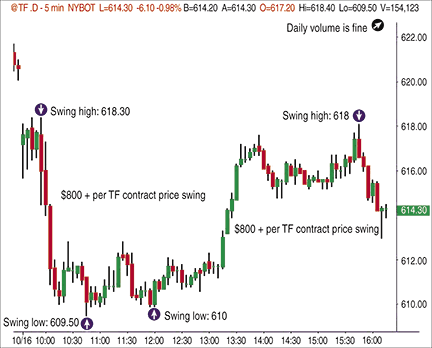TRADING BASICS
The Emini Of Your Dreams?
Trading The Russell 2000 Emini
The Russell 2000 emini futures is a highly tradable instrument. Here’s a look at some of its advantages and disadvantages.
The Standard & Poor’s 500 futures contract (ES) is the king of emini index futures markets. More traders trade that instrument than all other index futures combined. But popularity as measured by volume does not always mean that particular tradable is more profitable than others.
The S&P 500 futures contracts are the most liquid, most popular, and even most churned by black-box computer programs. The ES spends more time going sideways in consolidation patterns and/or pulling back inside directional periods than any of the other eminis, due to professional-level players working big orders that have nothing to do with accumulation or distribution patterns. Hedging to offset blocks of stock, Spy shares, Spx option positions, and intermarket positions such as ES/NQ (Nasdaq 100) spreads are all part of the intraday influence on S&P 500 futures.
In addition, numerous black-box programs exist solely for scalping sideways profit potential from ES markets versus something else. This could be the arbitrage spread between ES and Spy, ES and Spx options, or ES emini futures versus SP00S pit-traded futures and their mismatched bid/ask spreads — in other words, a lot of big-money positions trade inside the ES with no regard to direction. These program types work to keep price action sideways by arbitraging price discrepancies between different tradables.
It is that constant pressure on ES that creates sideways price behavior. Some retail traders develop strategies to take advantage of that predictability. Overall, it is the most congested emini instrument with the least amount of straight-line price movement.

Figure 1: TF, five-minute